| Jeremy Meckler |
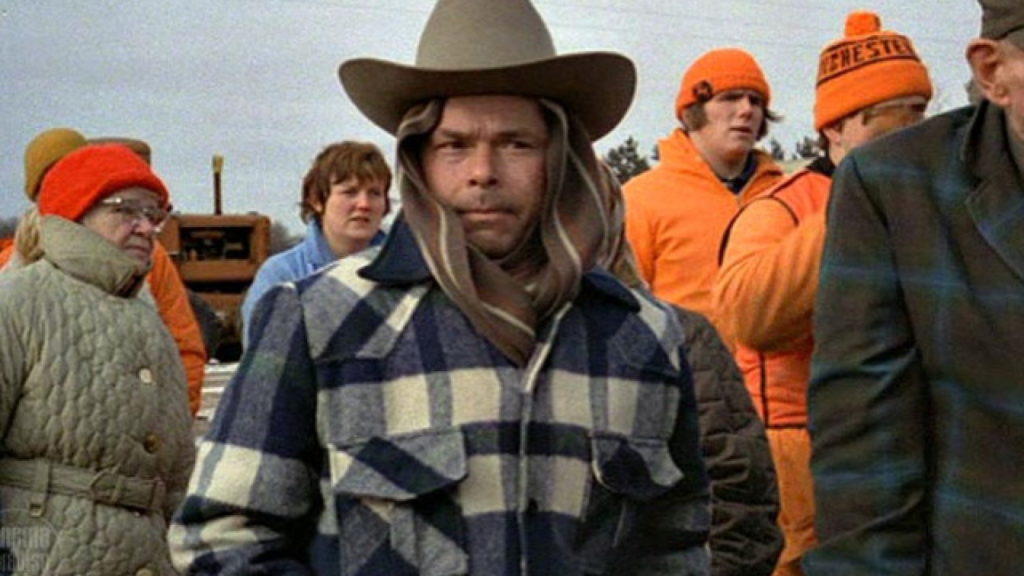
Stroszek screens at the Trylon from Friday, November 26 to Sunday, November 28. Scroll to the bottom of this page for tickets and more information.
Werner Herzog is one of those directors whose persona is sometimes more extravagant than his films. There’s the time he ate his shoe or jumped into a cactus patch; the time he pulled Joaquin Phoenix from a car wreck, or when he was shot by a sniper mid-interview and continued it anyway. Indeed, some of his films seem to get swept up in the Herzog myth, becoming more interesting as artifacts of a mad filmmaker than as films in their own right. Stroszek, Herzog’s meandering 1976 German-American road movie, has its fair share of legendary Herzog lore, but it also stands as an exceptional example of his unique cinematic vision. Balanced on the border between documentary and fiction Stroszek is perhaps the purest demonstration of Herzog’s experimental production approach, his devotion to stylized documentary as a way to access a deeper level of truth, and his consistent focus on characters at the margins of modern society. For my money, it’s also the most coherent articulation of the midwestern American spirit ever put on celluloid.
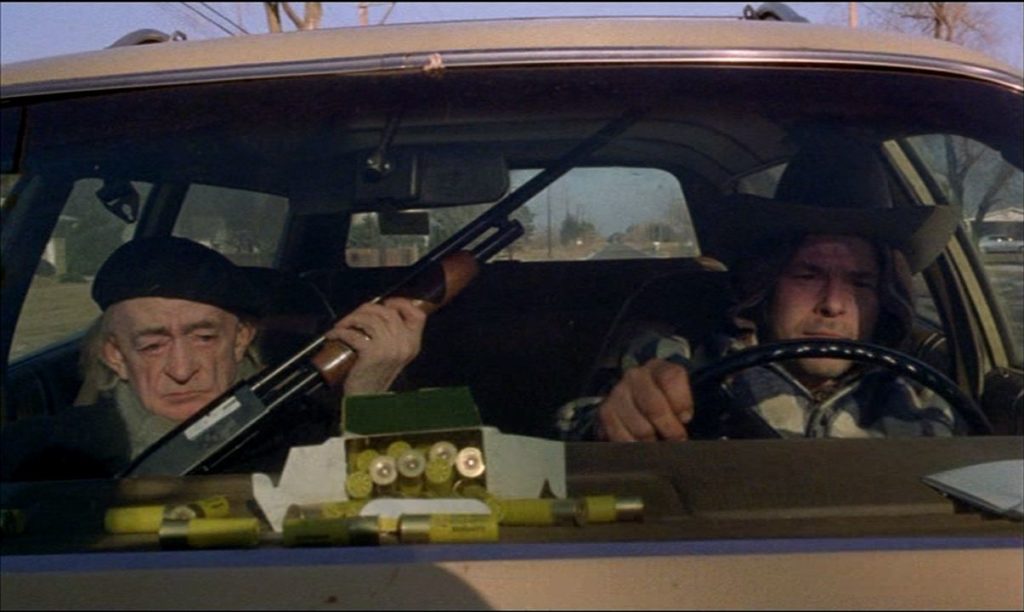
Stroszek is the result of a few creative and intellectual collaborations. The first is with Bruno S., the film’s star and direct inspiration. Bruno was a self-taught musician who played eighteenth-century ballads on accordion in Berlin streets and alleys. Herzog’s first encounter with Bruno was as the subject of a 1970 documentary and he was so immediately smitten that he sought out Bruno and cast him as the lead in his 1972 historical drama The Enigma of Kaspar Hauser. Bruno plays Kaspar Hauser, a (perhaps apocryphal) wild child teenager who wandered into Nuremberg in May 1828, repeating the phrase “I would like to be a rider, the way my father was” and bursting into tears when asked any question.[1] Through a series of interviews with the mayor, Hauser told a bizarre story: he had never seen another human being before and had spent his first sixteen years in isolation in a 3’ by 6’ cell in Bavaria where he would wake up to bread and water every morning. Hauser was the subject of inquiry and rumors, including that he was actually a prince, although his often contradictory stories also led many to believe he was a compulsive fabricator. He died at 21 from a stabbing in a park, either self-inflicted or by a stranger, and has remained an intriguing and mysterious figure ever since. Bruno, who had never acted before, was 42 when he played the teenaged Hauser, but he brought an innocence and sincerity to the role that somehow bridged their age gap, partially because his personal life bore uncanny resemblances to Hauser’s. Bruno spent age three through twenty-six in mental asylums and prisons after he was beaten so severely as a child that he lost the ability to speak. Per Herzog, “Bruno was very aware that the film was just as much about how society had destroyed him as it was about how society had killed Kaspar Hauser.”[2] Herzog even considered calling the film The Story of Bruno Hauser to highlight their resonances. The German title for the film, Jeder für sich und Gott gegen alle, literally Every Man for Himself and God Against All, sidesteps the dilemma by focusing on the guiding languor at the heart of both Bruno and Hauser.
After Kaspar Hauser, Herzog planned to work with Bruno again on Woyzeck, an adaptation of Georg Büchner’s unfinished stage play about the suffering of a working-class soldier in a nineteenth-century German town. But, as production took shape, Herzog changed his mind, finding his long-time muse/foil/fiend Klaus Kinski a better fit for the role. Bruno, whose life had been transformed by his stint as a movie star, was heartbroken. As a consolation, Herzog offered Bruno a role in a new movie that he made up on the spot. Herzog chose a title that sounded similar to Woyzeck, Stroszek, and dashed out the screenplay over the next four days, basing the concept even more directly on Bruno’s life than their previous collaboration.
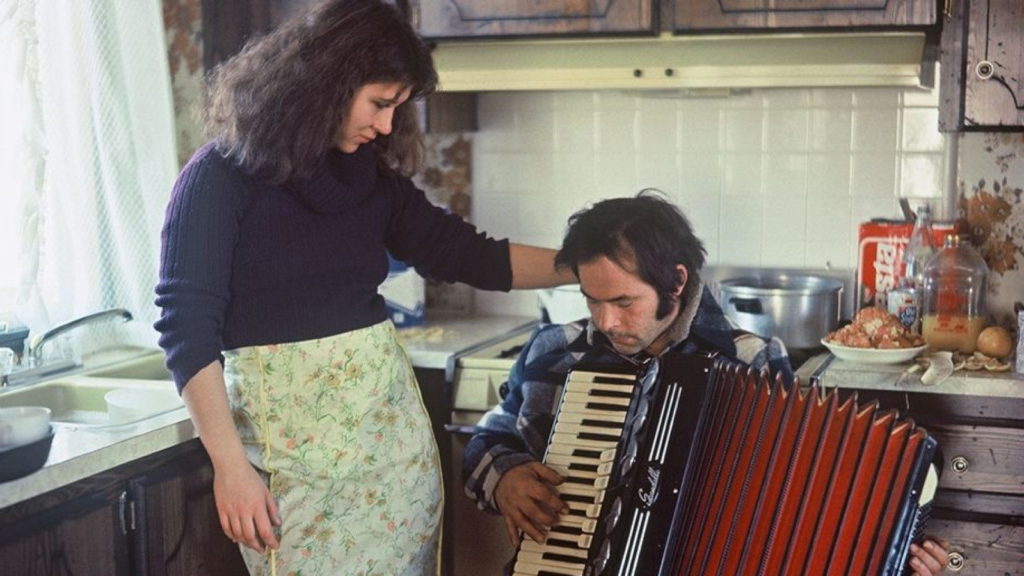
Bruno Stroszek (Bruno S.), the film’s central figure, is a Berlin street musician released from prison who, contrary the advice of the prison Warden, wanders directly into a seedy Berlin bar and gets in trouble with some German drug dealers. Along with his elderly neighbor Herr Scheitz (Clemens Scheitz) and his friend Eva (Eva Mattes), a sex worker looking to escape the same gang, Stroszek flees to rural Wisconsin where the three are taken in by Scheitz’s nephew, an auto mechanic who gives Stroszek a job in his repair shop. They move into a double-wide mobile home and are swept up into an American midwestern culture that is just as callous as the Berlin underworld. Stroszek is a meek and accommodating weirdo with a depressive streak caught in a cruel, though often darkly funny, world. Like Bruno S., Bruno Stroszek seems somehow completely artless, able through his naïveté to reveal uncomfortable truths about the world around him. As Roger Ebert put it in his review of Stroszek, “he looks as if he has long been expecting the worst to happen…. [H]e projects a kind of sincerity that is almost disturbing, and you realize that there is no corner anywhere within Bruno for a lie to take hold.”[3] Stroszek represents the culmination of Herzog and Bruno S.’s partnership, and even more than Kaspar Hauser, it relies on Bruno’s disturbing sincerity to give the film its raw emotional impact.
But Stroszek is also the result of an earlier collaboration, evident only in the opening credits, where Herzog thanks Errol Morris. Errol Morris is an Oscar-winning documentary maker and the inventor of the confrontational camera setup he calls the Interrotron. In 1976, however, he was a disaffected graduate student in UC Berkeley’s philosophy program, yet to embark on his first film. When he met Herzog, Morris was already on the outs from academia which he called “a world of pedants” and was knee-deep into independent research on the phenomenon of American serial killers. One of Herzog’s and Morris’s first collaborations was to collectively interview notorious serial murderer Ed Kemper in the state prison in Vacaville, California. This shared fascination also led them to Plainfield, Wisconsin, the birthplace (and scene of the crime) for Ed Gein. Gein was the real-world basis for Psycho’s Norman Bates and The Silence of the Lamb’s Buffalo Bill. Herzog and Morris’s interest in Gein focused on a morbid psychoanalytic question, directly prompted by Hitchcock’s film: Ed Gein was a grave robber with a severe Oedipus complex, but no one could tell them whether he had ever dug up his own mother’s grave as Bates does in Psycho. Herzog and Morris decided to find the answer the old-fashioned way, by digging up her grave themselves. They picked a date and planned to meet in Plainfield with shovels in hand, but Morris chickened out and stayed in California. Herzog made it, but his car broke down and was towed to a small auto shop in Plainfield where he hit it off with an unassuming local mechanic.
A couple of years later, searching for a film topic after promising Bruno S. the script for Stroszek, Herzog remembered this rural Wisconsin town and decided that Bruno Stroszek’s wanderings would bring him to Plainfield, renamed “Railroad Flats” in the film. Stroszek works in the same auto shop where Herzog’s car was towed, and that real-world mechanic, Clayton Szalpinski, plays Herr Scheitz’s mechanic nephew. Herzog would later say that Plainfield had a particular kind of menace:
There was something very gloomy and evil about Plainfield, and even during filming two bodies were found only ten miles from where we were filming. I certainly felt it was one of those places that are focal points where every thread converges and is tied in a knot. You have these points in the United States — for example, Las Vegas, or the Stock Exchange on Wall Street, or San Quentin prison — where the dreams and nightmares all come together. And I count Plainfield, Wisconsin to be among them.[4]
So, from a morbid obsession with the most American psychosis, serial killing, and a collaboration with another filmmaker with an obsessive revelatory drive, Herzog stumbled into a film about an abused, disturbingly sincere German ex-con searching for a new life in a spooky site of power in the upper Midwest.
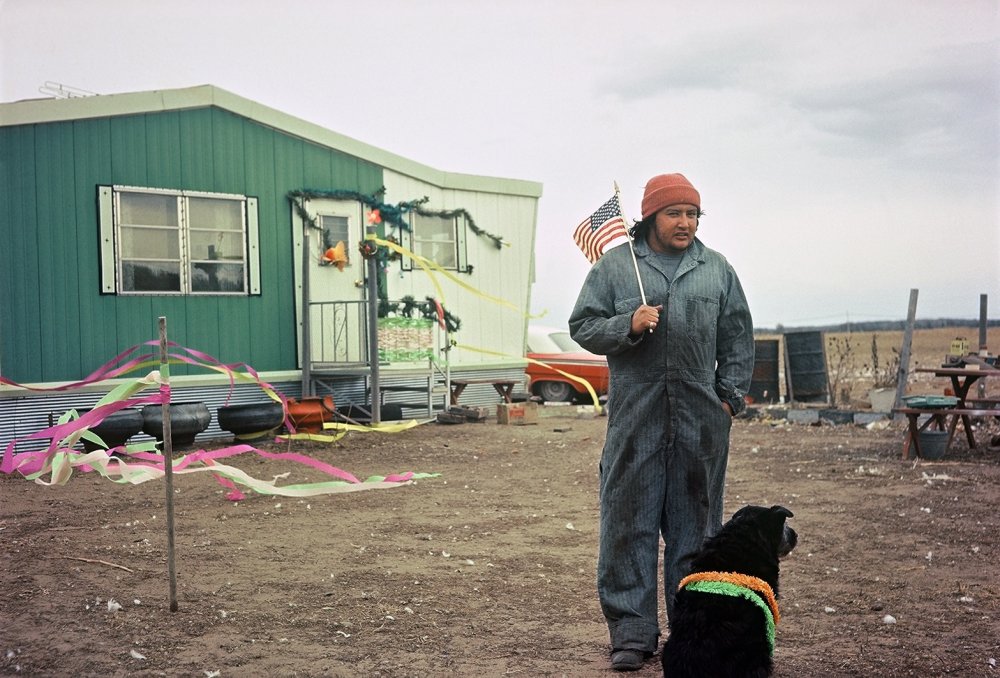
It is perhaps no surprise that Herzog and Morris would hit it off—both have shown long fascinations with the irrational margins of modern life, and both have a demonstrated knack for revealing uncomfortable and contradictory truths in a darkly comic mode. Morris’s films are often marked by long direct-to-camera monologues—interviews in which his subjects reveal something deep and earthshaking, often without knowing that they are doing it. As Morris put it in a 1989 New Yorker profile, “I like the irrelevant, the tangential, the sidebar excursion to nowhere that suddenly becomes revelatory.”[5] Herzog, in both his off-kilter, often poetic documentaries and his distanciating fiction films, is driven by a similar tendency toward finding a deeper truth beyond the limits of factual rationality. As he put it incisively in his 1999 Minnesota Declaration—delivered at the Walker Art Center—“There are deeper strata of truth in cinema, and there is such a thing as poetic, ecstatic truth. It is mysterious and elusive, and can be reached only through fabrication and imagination and stylization.”[6] Stroszek is itself the focal point of a variety of Herzog’s career-long interests—madness, absurdity, the incapacity of rationality, and a dark humor that sees something sublime and universal in ignorance and suffering. But the film’s specificity, its earnest connection to its setting and characters (most of whom are non-actors playing themselves) gives it a gentle, personal, and profound ability to distill the American Midwest down to its essence. This isn’t some snide, heartless sendup of flyover country, nor is it a romantic glorification of a lost American past. Instead Stroszek is a nuanced and loving portrayal of a spooky little town on the edge of the prairie. It’s one of Herzog’s strangest and most uncompromising films. (Ebert again: “Stroszek is not a comedy, but I don’t know how to describe it. Perhaps as a peculiarity.”[7]) But somehow, in its fusion of fiction and documentary, of improvised comedy and experimental amalgam, it finds its way to the soul of America, located somewhere between a professional auctioneer’s drawl and a dancing chicken.
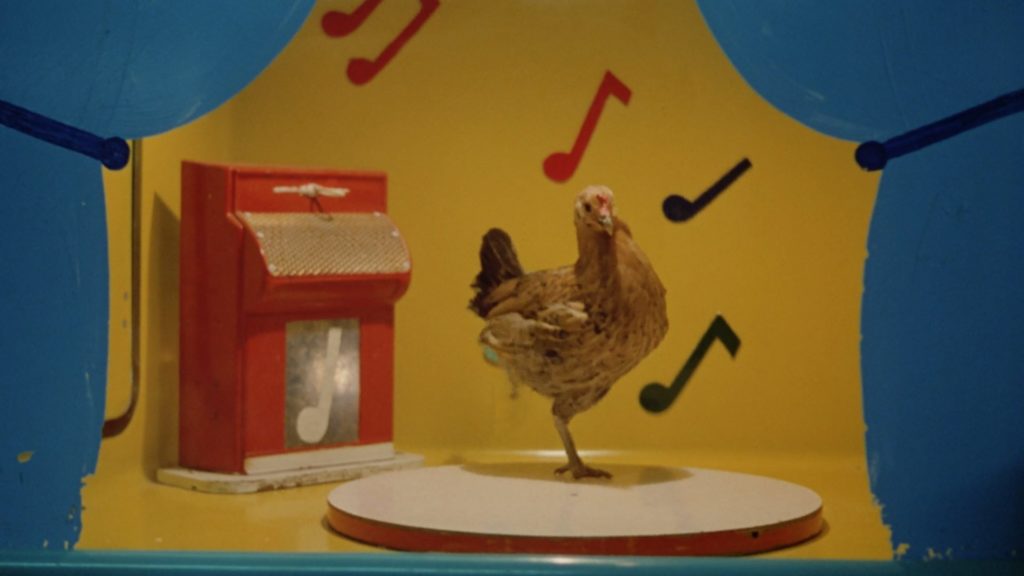
NOTES
[1] Jeffrey Moussaieff Mason, Lost Prince: The Unsolved Mystery of Kaspar Hauser. (London: Simon & Schuster, 1997), 5.
[2] Werner Herzog and Paul Cronin, Herzog on Herzog. (New York: Faber and Faber, 2002), 119.
[3] Roger Ebert, “Stroszek Movie Review & Film Summary (1977): Roger Ebert,” movie review & film summary (1977) | Roger Ebert (Chicago Sun Times, July 7, 2002), https://www.rogerebert.com/reviews/great-movie-stroszek-1977.
[4] Herzog and Cronin, Herzog on Herzog, 147.
[5] Mark Singer, “PREDILECTIONS,” The New Yorker, January 29, 1989, https://www.newyorker.com/magazine/1989/02/06/predilections
[6] Werner Herzog, “Werner Herzog Reads His Minnesota Declaration: Truth and Fact in Documentary Cinema,” Werner Herzog Reads His Minnesota Declaration: Truth and Fact in Documentary Cinema (Walker Art Center, April 30, 1999), https://walkerart.org/magazine/minnesota-declaration-truth-documentary-cinema-1999.
[7] Ebert, “Stroszek Movie Review & Film Summary (1977): Roger Ebert.”
Edited by Olga Tchepikova-Treon and Michelle Baroody
